1953 Allsate Car sold out of the Sears Catalog in 1952-1953 Collectors Dream
1953 Other Makes Allstate Series 4 for sale in Glendale, Arizona, United States
| Item location: |
Glendale, Arizona, United States |
| Make: |
Other Makes |
| Model: |
Allstate Series 4 |
| Trim: |
2 door sedan |
| Year: |
1953 |
| Mileage: |
100,000 |
| Color: |
Allstate Blue |
| Drive type: |
standard on tree |
| Vehicle Title: |
Clear |
| Want to buy? |
Contact seller!
|
Description
In 1945 California industrialist Henry J. Kaiser partnered with automobile executive Joe Frazer to respond to the American consumer's postwar demand for cars. mounting the last real American challenge to Detroit's Big Three automakers. They produced cars like 1949 Kaiser Vagabond. 1948 Frazer Manhattan. 1953 Kaiser Manhattan two-door sedan. the Dragon sedans. and Henry J compact coupes as well as some modified Henry J race cars. The Kaiser and Frazer Manhattan series were mainstays of the company lineup. Kaiser and Frazer automobiles were manufactured at Kaiser's Willow Run. Michigan. factory from 1946 to 1955. when declining sales forced the closing of Kaiser's domestic operations. At that time production was moved to Argentina and Brazil. where the company turned out a series of sedans. trucks and Jeeps until the company was sold to a combine of Ford and Renault owners in the late 1960s. The 1952 Sears. Roebuck catalog featured a new offering on the back cover -- the Allstate automobile. See more classic car pictures. ©2007 Publications International. Ltd. The 1952-1953 Allstate was an odd car that is remembered today (if it's remembered at all) for being Sears. Roebuck & Company's misguided attempt at entering the auto market. Classic Cars Image GallerySears usually goes to great lengths to hide the origin of proprietary products -- those built by some other famous company but wearing a Sears brand. But there was no disguising the origins of the Allstate. It was. of course. the Sears version of Kaiser-Frazer's compact Henry J. Most people. however. got their first look at it in the ubiquitous Sears catalog. and many never actually saw a real one. With a total production run of about 2. 00 units. Allstates weren't exactly the most common automobiles on the road. Theodore V. Houser. a Sears executive who also owned some Kaiser-Frazer stock. had been asking Henry Kaiser to build Sears a car since the west coast construction tycoon had entered the auto business in 1945. (This was not the first attempt by Sears to produce cars: a pretty little high-wheeler had carried the Sears name back in 1912. )Houser and Kaiser had earlier collaborated when the latter's steel mills produced pots and pans for Sears' kitchenware department. Design renderings of early. slab-sided Kaiser-Frazer sedans with Allstate labels were completed. but nothing came of the idea until Kaiser-Frazer produced the Henry J. announced in early 1950 as a 1951 model. The Henry J looked ideal to Sears because of its middle-class. economy-minded clientele. and Henry Kaiser agreed to produce a version for Sears. This decision caused dismay within the Kaiser-Frazer dealer organization. which fretted about competition from the giant department store and catalog merchandiser. Henry's son Edgar. Kaiser-Frazer's president. was sent to mollify the dealers: Allstates would be produced in small quantities. he told them. and would be marketed mainly on a test basis in the southeast part of the country (where Kaiser-Frazer's dealer network was notably sparse). The dealers remained unconvinced. As things turned out. Edgar was right. On Nov-17-14 at 09:54:18 PST. seller added the following information: OverviewManufacturerKaiser-Frazer CorporationProduction1952 – 1954AssemblyWillow Run. MichiganToledo. Ohio. United StatesBody and chassisBody style2-door sedanLayoutFR layoutPowertrainEngine134. 2 cu in (2. 2 L) I4 161 cu in (2. 6 L) I6DimensionsWheelbase100 in (2. 40 mm)Length178 in (4. 21 mm)Width70 in (1. 78 mm)The Allstate is a badge engineered version of the Henry J American automobile that was offered for sale through Sears. Roebuck during the 1952 and 1953 model years. Contents [hide] 1 History2 Development3 Production4 See also5 References6 External linksHistory[edit]The Sears retail chain marketed vehicles made by the Lincoln Motor Car Works under the name "Sears Motor Buggy" between 1908 and 1912. These horseless carriages were of the "high-wheeler" variety with large wagon-type wheels. Their high ground clearance was well-suited to muddy. wagon-rutted country roads. Customers were accustomed to mail-ordering through the Sears catalog. and the Sears Motor Buggy could be delivered to the nearest railroad siding. Development[edit]The Allstate was the brainchild of Henry J. Kaiser. who saw Sears as another means to mass-market his slow-selling "Henry J" two-door sedan. introduced in 1950. The Allstate was essentially a Henry J. but with a number of differences that included Allstate badges on the hood and rear deck. a more upscale interior of Saran plaid or occasionally leather or smooth vinyl. special hubcaps/wheel covers. horn buttons and instrument bezels. a locking glove box and trunk lid. special engine color (blue). custom armrests and sunvisors. revised door locks and keys. and special parking[1] and taillamp assemblies. Most notably. the Allstate featured a unique two-bar grille and jet-plane hood ornament designed by Alex Tremulis. who had come to Kaiser-Frazer from the Tucker Corporation. Allstate automobiles were planned to be built on the senior Kaiser platforms. but following three years of negotiations between Kaiser-Frazer and Sears. the production Allstate was announced on November 20. 1951 by Sears merchandising vice president Theodore V. Houser and Kaiser-Frazer administrative vice-president Eugene Trefethen. The three-year delay was due in part to tension from existing Kaiser-Frazer dealerships fearing competition with Sears. Production[edit]The Allstate was built by Kaiser-Frazer (Kaiser-Willys from 1953). in Willow Run. Michigan (Toledo. Ohio from 1953) and was based on Kaiser's compact Henry J. One body style was offered. a fastback two-door sedan in two lines. the Series 4 and the Series 6. For 1952. the Series 4 came in the Model 111 Standard (the best seller at US$1. 86) and Model 113 DeLuxe ($1. 39) trim versions. and was also available in an austere Model 110 Basic version for $1. 95. The Series 6 Basic was priced at $1. 94 and the well-trimmed. swift Model 115 DeLuxe was offered at $1. 93. (The Standard was never offered in the Series 6. ) They had a 100 in (2. 00 mm) wheelbase. [2] The marketing slogan was "Your one brand new car for '52! Allstate!"[1]Virtually no appearance changes were made for 1953 but Allstate cars weighed as much as 145 lb (66 kg) more than their 1952 counterparts. All the Allstate Basic models were dropped and Allstate prices jumped substantially; the entry-level Series 4 Standard Model 210 sold for $1. 28 and the DeLuxe Model 213 for $1. 89. The Series 6 was now only offered in the upscale DeLuxe Model 215 version at $1. 85. and was the most popular Allstate that year. The standard Allstate interior material was made from tightly twisted strands of paper that were woven together and then coated in plastic. which proved to be unusually durable as well as attractive and eliminated the need for seat covers. Seat covers were popular in the 1950s. and many were made of this same type of material. Unlike early Henry Js. which were built without trunk lids to reduce costs. Allstates offered opening trunk lids. Series 4 cars used a 134. 2 cu in (2. 2 L) L-head four-cylinder 68 hp (51 kW) engine. and the Series 6 was powered by a 161 cu in (2. 6 L) L-head six 80 hp (60 kW). both powerplants built by Willys. A three-speed manual transmission was standard with overdrive available for $104 extra. One mechanical difference between Allstate and Henry J was Allstates were equipped with Allstate-brand tires. tubes. spark plugs and batteries. all with their own Sears "Triple Guarantee" warranties. Initially. the Allstate was offered only in the south and southwest United States. with plans to expand distribution as demand for the product grew. Sears locations selling Allstates included Baytown. Texas; Beaumont. Texas; Birmingham. Alabama; Dallas. Texas; Fayetteville. North Carolina; Houston. Texas; Jackson. Mississippi; Knoxville. Tennessee; Little Rock. Arkansas; Lubbock. Texas; Memphis. Tennessee; Norfolk. Virginia; Orlando. Florida; Phoenix. Arizona; Portsmouth. Virginia; Richmond. Virginia; Salt Lake City. Utah; and Waco. Texas. While some Sears outlets tried to stock at least one sample of the car. most were built on demand by Kaiser-Frazer. which made delivery to the store where they were sold. Kaiser-Frazer urged its dealers to service Allstate cars when asked. Many Kaiser-Frazer dealers were displeased to see "their cars" sold by another outlet. especially since the Allstate carried more standard equipment. yet sold at a lower price than the Henry J. Sears marketed the car as "the lowest-priced full-sized sedan on the U. S. market. " However. Sears did not accept trade-ins from Allstate buyers. and there may have been reluctance to buy a car through a department store where service was thought to be questionable. The lack of a trade-in program proved to be a serious impediment to the sale of Graham-Bradley tractors from Graham-Paige Motors Corp. by Sears in the late 1930s. Only 2. 63 Allstates were sold in two model years before the marque was discontinued; 1. 66 during 1952 and 797 in 1953. Kaiser soon discontinued the Henry J as well. See also[edit]Allstate (vehicle brand)References[edit]^ Jump up to: a b Flory. Jr. . J. "Kelly" (2008). American Cars. 1946-1959 Every Model Every Year. McFarland. ISBN 978-0-7864-3229-5. Jump up ^ "1952 Allstate A-230 performance data. specs & photo". Automobile-catalog. com. Retrieved 2011-11-20. Gunnell. John. ed. (1987). The Standard Catalog of American Cars 1946-1975. Krause Publications. ISBN 978-0-87341-096-0. Langworth. Richard M. (1975). Kaiser-Frazer. the Last Onslaught on Detroit: An Intimate Behind the Scenes Study of the Postwar American Car Industry. Princeton Publishing. ISBN 978-0-915038-04-6. In 1945 California industrialist Henry J. Kaiser partnered with automobile executive Joe Frazer to respond to the American consumer's postwar demand for cars. mounting the last real American challenge to Detroit's Big Three automakers. They produced cars like 1949 Kaiser Vagabond. 1948 Frazer Manhattan. 1953 Kaiser Manhattan two-door sedan. the Dragon sedans. and Henry J compact coupes as well as some modified Henry J race cars. The Kaiser and Frazer Manhattan series were mainstays of the company lineup. Kaiser and Frazer automobiles were manufactured at Kaiser's Willow Run. Michigan. factory from 1946 to 1955. when declining sales forced the closing of Kaiser's domestic operations. At that time production was moved to Argentina and Brazil. where the company turned out a series of sedans. trucks and Jeeps until the company was sold to a combine of Ford and Renault owners in the late 1960s. Sears usually goes to great lengths to hide the origin of proprietary products -- those built by some other famous company but wearing a Sears brand. But there was no disguising the origins of the Allstate. It was. of course. the Sears version of Kaiser-Frazer's compact Henry J. Most people. however. got their first look at it in the ubiquitous Sears catalog. and many never actually saw a real one. With a total production run of about 2. 00 units. Allstates weren't exactly the most common automobiles on the road. Theodore V. Houser. a Sears executive who also owned some Kaiser-Frazer stock. had been asking Henry Kaiser to build Sears a car since the west coast construction tycoon had entered the auto business in 1945. (This was not the first attempt by Sears to produce cars: a pretty little high-wheeler had carried the Sears name back in 1912. )Houser and Kaiser had earlier collaborated when the latter's steel mills produced pots and pans for Sears' kitchenware department. Design renderings of early. slab-sided Kaiser-Frazer sedans with Allstate labels were completed. but nothing came of the idea until Kaiser-Frazer produced the Henry J. announced in early 1950 as a 1951 model. The Henry J looked ideal to Sears because of its middle-class. economy-minded clientele. and Henry Kaiser agreed to produce a version for Sears. This decision caused dismay within the Kaiser-Frazer dealer organization. which fretted about competition from the giant department store and catalog merchandiser. Henry's son Edgar. Kaiser-Frazer's president. was sent to mollify the dealers: Allstates would be produced in small quantities. he told them. and would be marketed mainly on a test basis in the southeast part of the country (where Kaiser-Frazer's dealer network was notably sparse). The dealers remained unconvinced. As things turned out. Edgar was right.
Other classic cars for sale
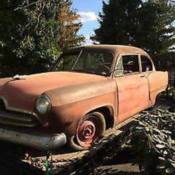 1953 SEARS ALLSTATE - RARE (Henry J)
1953 SEARS ALLSTATE - RARE (Henry J)
 1953 Dodge Suburban Wagon 2 door 1950 1952 1953 1954 1959 chevy Wagon restomod
1953 Dodge Suburban Wagon 2 door 1950 1952 1953 1954 1959 chevy Wagon restomod
 1951 Henry J Gasser Hot Rat Rod Willys 1952 1953 1954
1951 Henry J Gasser Hot Rat Rod Willys 1952 1953 1954
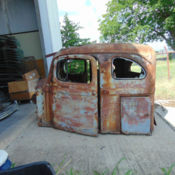 1949 1950 1951 1952 1953 White WC commercial truck cab rat rod hot sleeper
1949 1950 1951 1952 1953 White WC commercial truck cab rat rod hot sleeper
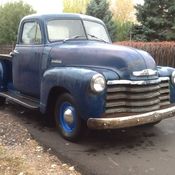 1951 Chevrolet 3100 pickup truck 1948,1949,1950,1952,1953
1951 Chevrolet 3100 pickup truck 1948,1949,1950,1952,1953
 1952 Chevrolet 3100 Pick up Truck 1953 1954 1955 1951 1950 1949 1948
1952 Chevrolet 3100 Pick up Truck 1953 1954 1955 1951 1950 1949 1948
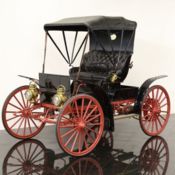 1909 Sears Model K Runabout
1909 Sears Model K Runabout
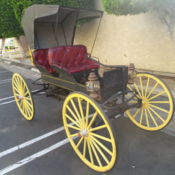 RARE 1908 SEARS BUGGY ROADSTER
RARE 1908 SEARS BUGGY ROADSTER